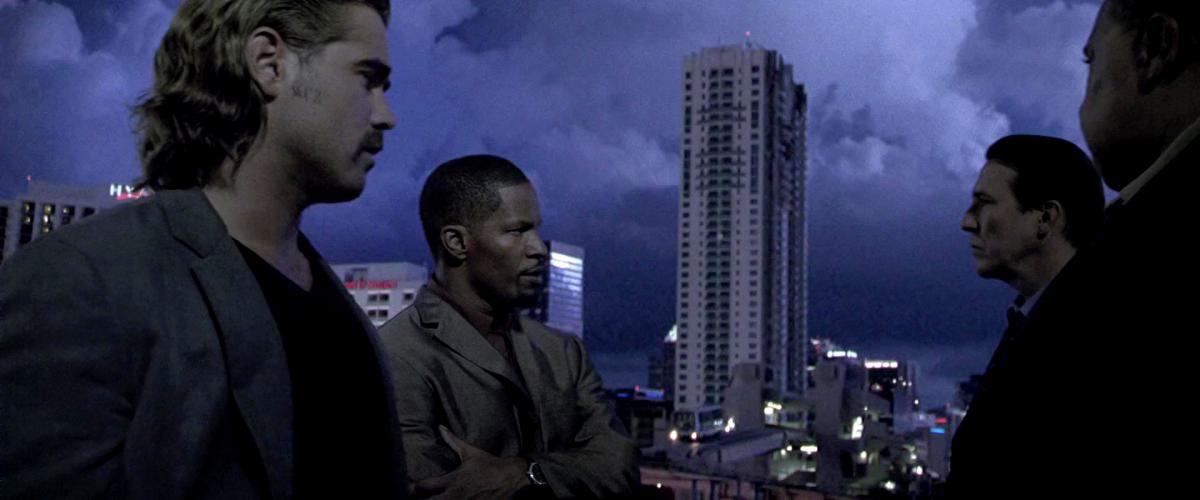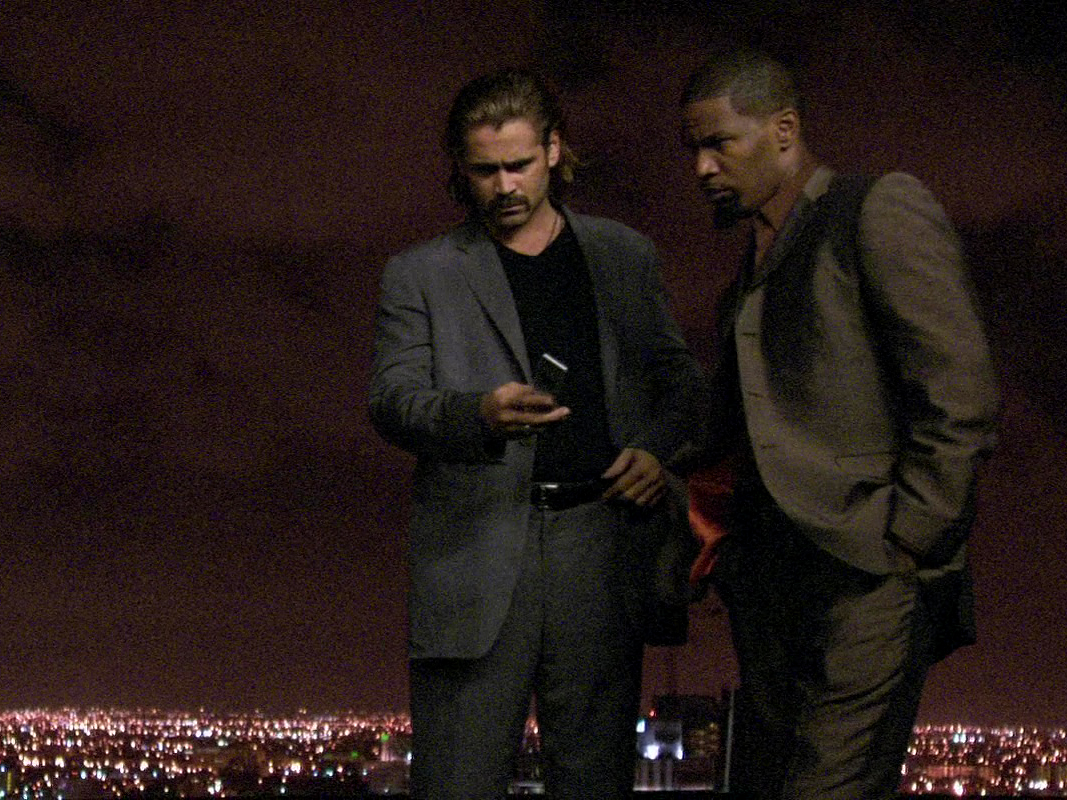Miami Vice (2006) is the ninth film by American filmmaker Michael Mann, also known for Thief (1981), Manhunter (1986), Heat (1995), Ali (2001) and Public Enemies (2009). Mann has always occupied a special position in the Hollywood of the past thirty years. He is one of the few filmmakers who managed to build up a singular oeuvre within an industrial logic, formally explicit and with a preference for experimentation. “It is amazing to find such a great stylist in contemporary American cinema,” Olivier Assayas wrote admiringly in 2002. Mann was also one of the first filmmakers to embrace the digital as a material with its own pleasures and aesthetic value, against any nostalgia for 20th-century celluloid-only cinema.
Miami Vice is an update of the 1980s television series of the same name, of which Mann was executive producer. In 2006, the world of police officers James “Sonny” Crockett and Ricardo “Rico” Tubbs looks very different. Rico (Jamie Foxx) and Sonny (Colin Farell) work undercover in the grim world of international drug crime. The deeper they descend, the blurrier the line between their real and fabricated identities. After earlier experiments with high-definition digital video in Collateral and Ali, Mann resolutely opts for the digital format in Miami Vice. The result is an action movie that is not only driven by plot and spectacle, but is just as much a plastic work, characterized by the grainy texture and colours of the first HD cameras and a mise-en-scène that can be read as a choreography in which the physical relationship between the characters plays a crucial role. At first glance, Mann seems to be one of those filmmakers whose “stylistic virtuosity compensates for the lightness of the subject, the formal intensity masking the incoherence of the plot or the imprecision of thought” (Cyril Neyrat). But Mann’s Miami Vice is more than a style exercise; the aesthetic possibilities of the digital are brought into play to describe a new globalized and connected world, defined by overvisibility, surveillance and intangibility. Oscillating between “hyperrealism and impressionism” (Jean-Baptiste Thoret) and starting from the rules of the genre film, Miami Vice seems to be driven by both a fascination and a distaste for late capitalism, with Mann using a new cinematic technique to make the spectator a witness to the process of a contemporary world and its forms.

Milestones is a series of stand-alone screenings, hosted by Sabzian, of film-history milestones, reference works or landmarks, films that focus on aesthetic or political issues and stimulate debate and reflection. In earlier instalments, Sabzian presented Andy Warhol’s Sleep (1964), Jean-Luc Godard’s monumental video work Histoire(s) du cinéma (1988-1998), Robert Kramer’s Milestones (1974), Méditerranée (1963) and L’ordre (1973), two films by Jean-Daniel Pollet and recently Shadi Abdel Salam’s Al-mummia (1969), Georges Rouquier’s Farrebique ou les quatres saisons (1946), Al Dhakira al Khasba [Fertile Memory] (Michel Khleifi, 1980), Harun Farocki’s Bilder der Welt und Inschrift des Krieges (1989) and Losing Ground (Kathleen Collins, 1983). For each screening, Sabzian publishes texts that contextualize the film.


